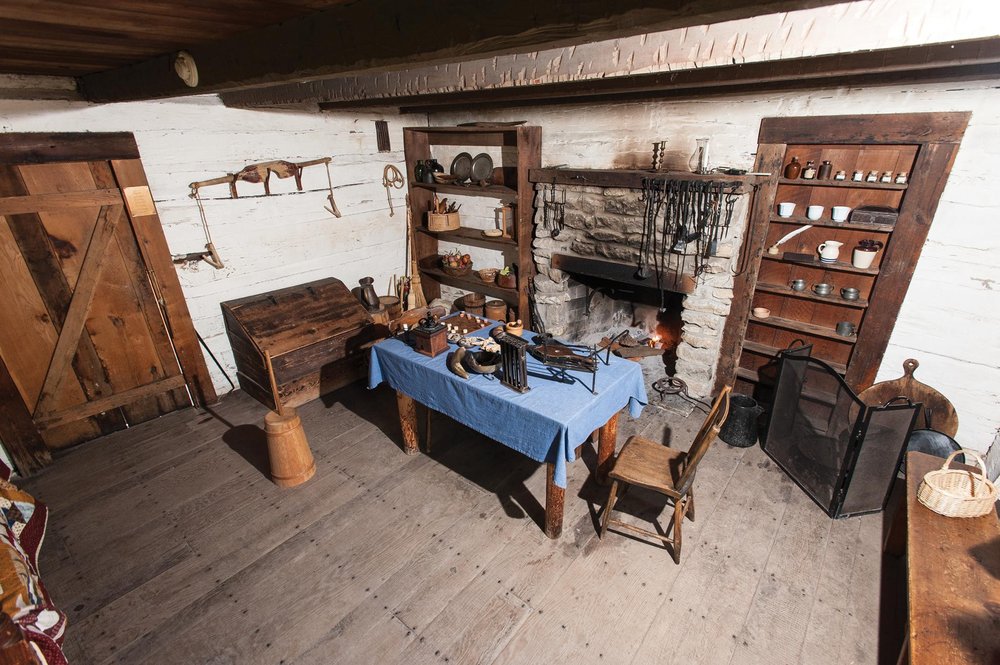
In 1831, Captain Joseph Naper, a former captain on the Great Lakes, led a party of 50 to 60 settlers from Ashtabula, Ohio, to a parcel of lush prairieland along the DuPage River, land that would become known as Naper’s Settlement. These first settlers lived in crowded log homes like this one. Swedish and Finnish colonists who settled the Delaware Valley in Pennsylvania brought the style to America in the 1630s. Settlers built log homes of readily available natural materials like wood, stone, and mud. To build a log home of this size (18 feet by 16 feet), a settler would need to cut down seventy to eighty logs of equal size. Log homes could be built of logs that were either hewn, cut and shaped, or unhewn, left whole. After cutting, builders made notches at the ends of the logs. Notches held logs in place and eliminated the need for nails or pegs. Builders filled the gaps between logs with clay or mud. This process, known as chinking, weatherproofed the exterior walls. Many settlers built their log cabins with holes in the roof to vent smoke, greased paper windows, and a dirt floor. A settler might turn his log cabin into a log house by adding a hinged door, glass windows, a plank floor, and a fireplace with a chimney. The finished product was a log home any early settler could be proud of. Log homes were never intended to be permanent structures. Settlers would live in the simple log home for only a few years until they built a larger frame house like those they lived in back East.
Living quarters were tight in log cabins, with settler households averaging six people. Life inside the log home revolved around the fireplace, which was the main source of heat, light, and fuel for cooking. No day passed when the fireplace went unused—even in the summertime. Life in a log house was hard work and little play. Every member of a frontier household, including children, was responsible for daily chores essential to the family’s survival. Men and older boys cleared and cultivated fields, chopped firewood, and tended livestock. Women were responsible for cooking, cleaning, sewing, laundering, and related tasks. Children carried water, gathered fallen branches for kindling, and minded their younger siblings.
The log house at Naper Settlement is the only building on the museum grounds which is not originally from this area. This log house was brought to Naper Settlement in 1978 from Jonesboro, Illinois.